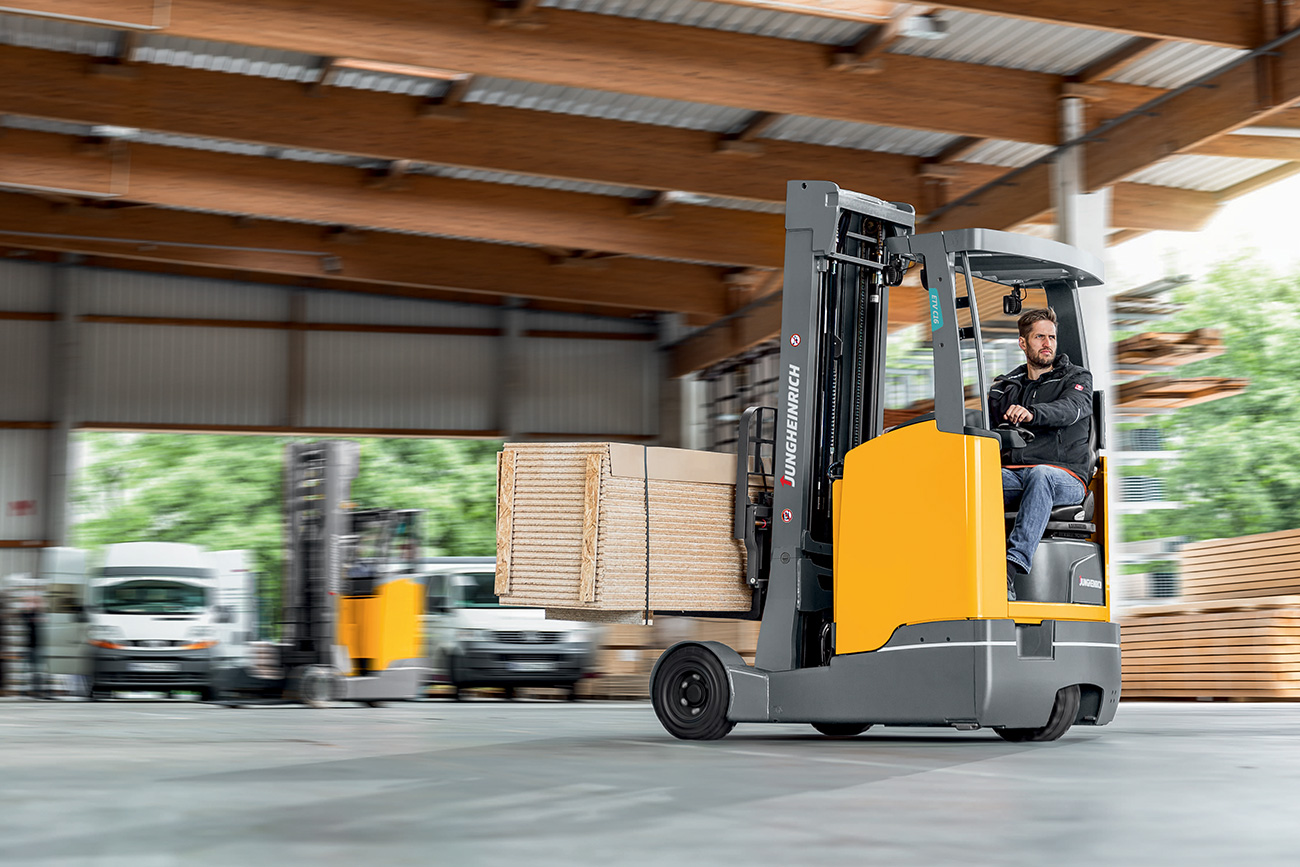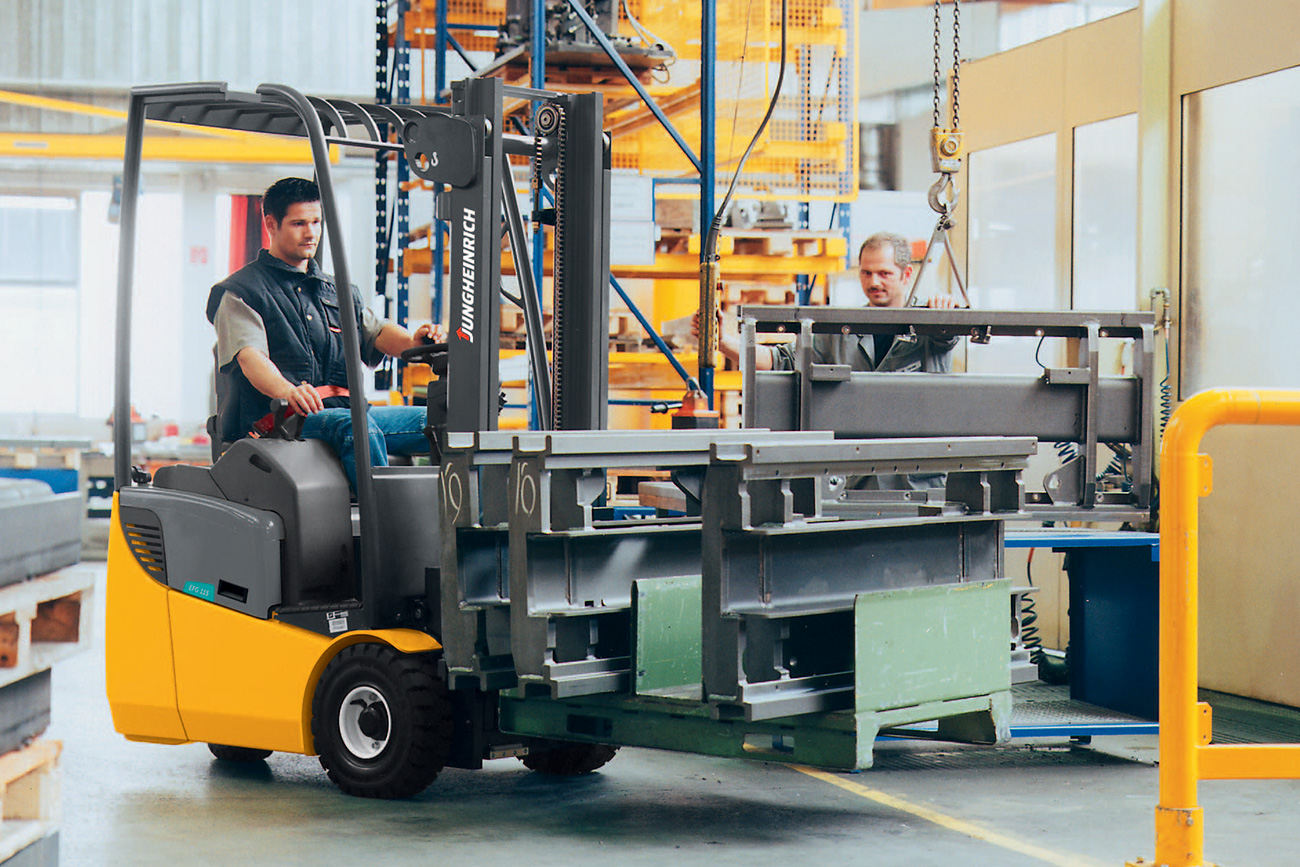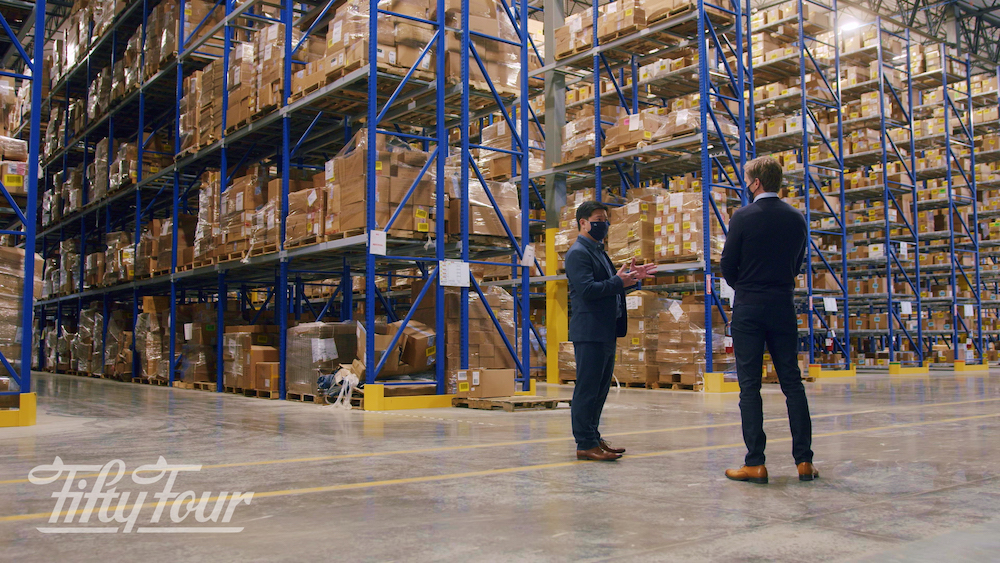
In today’s rapidly evolving logistics landscape, going green in a warehouse setting has become an essential strategy for improving sustainability, reducing costs, and enhancing operational efficiency. Implementing electric powered equipment, such as electric forklifts, pallet jacks, and automated systems, plays a pivotal role in this transition. Not only does it help lower energy consumption and minimize carbon emissions, but it also contributes to a safer, cleaner, and more productive work environment. By adopting electric-powered technologies, warehouses can align with environmental goals, cut down on operational expenses, and future-proof their operations in an increasingly eco-conscious world.
There are advantages and disadvantages of applications of internal combustion (IC) engine forklifts. IC lift trucks are easy to refuel, are great for outdoor use and can be used indoors when fueled with propane. The initial cost of IC equipment is lower and can be suitable for long or multiple shift operations, and is an excellent choice for heavy-duty operations requiring lift capacity of over 35,000 pounds.
Depending on the make and model, a variety of fuel types can be used: compressed natural gas, diesel, gasoline and liquid petroleum. Disadvantages of IC forklifts include having higher maintenance and fueling costs and there must be good ventilation with indoor use. If refueling is necessary during a shift, the downtime can be a detriment to a smooth and efficient workflow. Regular maintenance and safety inspections are required due to the components in the lift truck which can slow down productivity.
There can be some disadvantages to utilizing electric forklifts, such as incurring higher initial costs and limited weight capacity of 16,500 pounds. If purchasing electric equipment, then there needs to be space for charging stations and operators must be trained on battery maintenance. The recharging process can take up to 8 hours with an 8-hour cooling period. One battery charge will last from 3 to 12 hours, depending on the make and model and how it is used. It is a good idea to purchase extra batteries if using the lift truck during multiple shifts.

Implementing Electrics Can Produce Significant Results
- Energy Efficiency
Electric-powered equipment is typically more energy-efficient compared to traditional fuel-based machinery. This not only helps lower the overall energy consumption in a warehouse but also reduces operating costs in the long term. They provide exceptional service for indoor warehouse facilities. The move to electric-powered forklifts, for instance, means fewer fuel costs and potentially lower maintenance expenses.
- Environmentally Friendly
Electric equipment contributes to a greener, more sustainable warehouse operation. With the growing emphasis on reducing carbon footprints and achieving sustainability goals, switching to electric-powered tools and material handling equipment is a key step in reducing the warehouse’s environmental impact. Electric forklifts, automated guided vehicles (AGVs), and electric pallet jacks, for example, help in minimizing emissions and air pollution.
- Reduced Maintenance and Operational Costs
Electric equipment often requires less maintenance than its diesel or gas-powered counterparts. With fewer moving parts and no need for oil changes or exhaust system repairs, electric machinery can result in lower maintenance costs and higher productivity. This is particularly beneficial in warehouse environments where equipment reliability is crucial for operations.
- Improved Safety and Indoor Air Quality
Electric equipment generates less noise and has essentially zero emissions, creating a safer and more comfortable working environment for employees. The reduced noise levels can improve communication on the warehouse floor, and the lack of fumes makes it safer to operate in enclosed areas.
- Automation and Smart Capabilities
Many electric-powered systems are designed to be integrated with automated systems or smart technologies. This can lead to improvements in operational efficiency, such as through the use of electric AGVs, automated sorting systems, and robotics. Most electric forklifts can be easily maneuvered in narrow aisles and tighter spaces. These systems can help streamline processes, increase throughput, and reduce human error.
- Regulatory Compliance
With stricter environmental regulations in many regions, switching to electric equipment may help a warehouse comply with local laws or sustainability standards. Warehouses can also earn certifications or incentives for adopting cleaner, greener technologies.
- Increased Productivity
Many electric-powered machines, such as forklifts and pallet jacks, are designed to be more efficient, faster, and easier to use than their gas-powered counterparts. This can lead to increased productivity on the warehouse floor, with quicker and more efficient loading, unloading, and material handling.
- Long-Term Cost Savings
Though electric equipment can require a higher upfront investment, the long-term savings from reduced fuel costs, lower maintenance cost, and labor expenses can be significant. Electric forklifts have less moving parts, meaning less overall maintenance. As energy prices fluctuate and with the growing availability of electric charging infrastructure, the ROI on electric warehouse equipment tends to be favorable over time.
Summary
Before making a decision on which type of equipment to select, consider the work environment and applications that make the most sense for a warehouse or distribution center facility. Switching to electric equipment in a warehouse not only supports sustainability but also enhances safety, efficiency, and cost-effectiveness. The impact can be substantial in terms of both environmental responsibility and operational performance.
54 Intralogistics Offers Solutions for Speed, Efficiency and Profitability
If your goal is to improve your bottom line and create a more efficient operation, 54 Intralogistics will provide integrated solutions, automation and equipment to reach that goal. A 54 Intralogistics team will review and analyze your warehouse logistics, layout, machinery, technology, workers and specifications. The result will be a plan to offer optimization and utilization in every area of your warehouse space, manufacturing plant or business facility.
54 Intralogistics Offers Equipment, Products and Services
Powered Equipment:
- Smart Lift Trucks
- Order Picking Solutions
- Automated Storage & Retrieval Systems
- Conveyor Systems & Sortation
- Automated Guided Vehicles (AGVs) & Robotics
- Vertical Lift Systems & Carousels
- Turret Trucks & Reach Trucks
Warehouse Products:
- Pallet Rack Systems
- Shelving and Lockers
- Mezzanines & Modular Offices
- Dock & Safety Solutions
Services:
- Consultation & Analysis
- System Design & Engineering
- Systems Integration & Automation Consultation
- Warehouse Management Software
- Fleet Management & Telemetrics
- Project Management & Maintenance
Contact 54 Intralogistics today!
